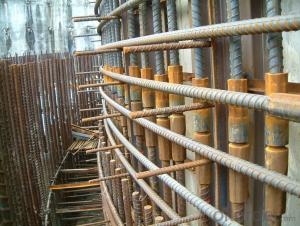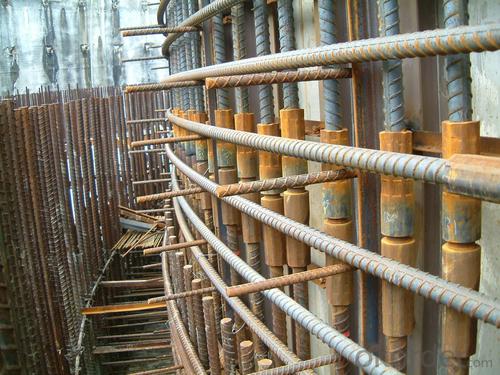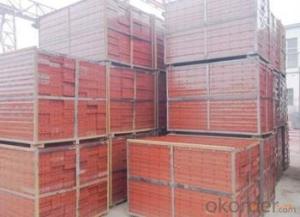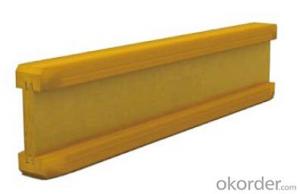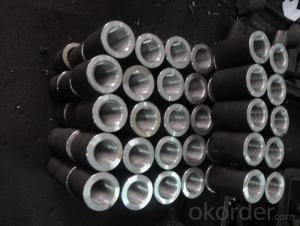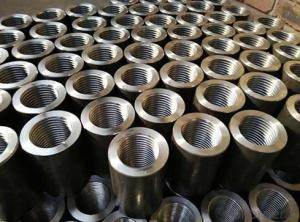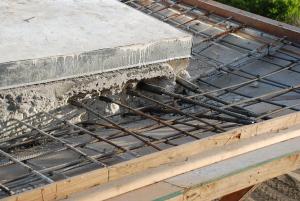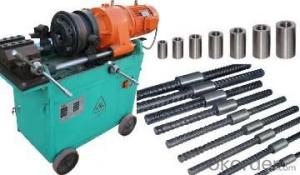Steel Coupler Rebar Scaffolding Construction Frame Scaffolding Made in China
- Loading Port:
- Shanghai
- Payment Terms:
- TT OR LC
- Min Order Qty:
- 1000 pc
- Supply Capability:
- 10000000 pc/month
OKorder Service Pledge
OKorder Financial Service
You Might Also Like
Steel Coupler Rebar Scaffolding Construction Frame Scaffolding Made in China
1.Description:
Lapped joints are not always an appropriate means of connecting rebar. The use of Steel Rebar Couplers can simplify the design and construction of reinforced concrete and reduce the amount of reinforcement required.
The threaded steel coupler system is designed as a threaded reinforcement connection with 100% load transmission. The steel coupler rebar connection system is suitable for both static and dynamic load transmission in construction joints.
The coupler is designed as a threaded reinforcement connection for formed construction joints. Reinforcement work is normally carried out on both sides of the construction joint using lap joints or one side is anchored. The bar lengths are based on the structural analysis requirements of the building component and are calculated from anchorage and lap lengths.

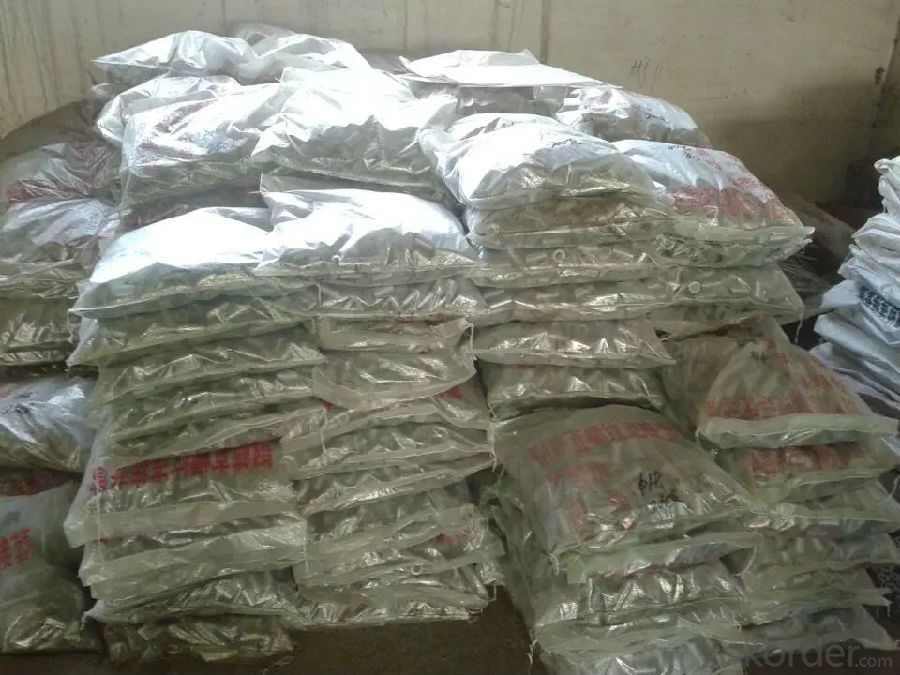
2.Advantages of Steel Coupler Rebar Lift Scaffolding Galvanized Scaffolding Tube with Low Price:
The coupler system provides the opportunity to connect rebars quickly, easily and cost effectively, even when large rebar diameters are used. This makes the steel coupler rebar range a logical extension to our rebendable CNBM reinforcement continuity system for rebars over 12 mm.
3.Available sizes of Steel Coupler Rebar Lift Scaffolding Galvanized Scaffolding Tube with Low Price:
14mm,16mm,18mm,20mm,22mmm,25mm,28mm,32mm,36mm,40mm
4.Delivery:
Delivery Term: FOB / CFR / CIF available.
Delivery Time: 15 days or less after order confirmed.
5.Why choose us?
Technical Expertise
Experienced Management
Stringent Quality Control
Exemplary Service
On-Time Delivery
Wide Product Range
Competitive Pricing
Huge branch network capable of catering worldwide
- Q: Can steel formwork be used for airport construction projects?
- Yes, steel formwork can be used for airport construction projects. Steel formwork is a versatile and durable option for constructing various concrete structures, including those found in airports. It offers several advantages such as high strength, stability, and reusability, making it suitable for large-scale projects like airport construction. Steel formwork can withstand the heavy loads and pressures associated with airport infrastructure, allowing for the construction of runways, taxiways, aprons, and other structures. Additionally, its modular design and flexibility enable easy customization and adaptation to different project requirements. Overall, steel formwork is a reliable choice for airport construction projects due to its strength, durability, and adaptability.
- Q: How does steel formwork impact the overall project management?
- Steel formwork can have a significant impact on the overall project management in various ways. First and foremost, steel formwork is known for its durability and longevity, which means it can be reused multiple times throughout the project. This reduces the need for frequent replacements and repairs, saving both time and money. Moreover, steel formwork provides a high level of accuracy and precision, ensuring that the concrete structures are built according to the specified dimensions and specifications. This not only enhances the quality of the project but also minimizes the chances of rework or corrective measures, thereby saving time and resources. Additionally, steel formwork offers greater flexibility and versatility compared to traditional wooden formwork. It can be easily adjusted and modified to accommodate changes in design or unforeseen circumstances during the construction process. This adaptability enables project managers to make on-site adjustments quickly and efficiently, keeping the project on track and minimizing delays. Furthermore, steel formwork is known for its faster installation and dismantling process. This allows for faster construction cycles, enabling project managers to meet tight deadlines and complete the project within the scheduled timeframe. The faster turnaround time also improves project efficiency and reduces overall project costs. Lastly, steel formwork is considered a safer option compared to other formwork materials. It provides a stable and secure platform for workers, minimizing the risk of accidents and injuries. By prioritizing worker safety, project managers can maintain a productive and efficient work environment. In conclusion, steel formwork has a positive impact on overall project management by enhancing durability, accuracy, flexibility, speed, and safety. Utilizing steel formwork can lead to improved project outcomes, reduced costs, and enhanced efficiency, ultimately contributing to the successful completion of the project.
- Q: What are the common design considerations for steel formwork in marine environments?
- Some common design considerations for steel formwork in marine environments include corrosion resistance, durability, strength, and stability. Steel formwork used in marine environments should be made from corrosion-resistant materials, such as stainless steel or galvanized steel, to prevent degradation due to exposure to saltwater. It should also be designed to withstand harsh weather conditions, including high winds and waves, to ensure its longevity. Additionally, the formwork should have sufficient strength and stability to support the weight of concrete and withstand the forces exerted by the marine environment. Proper sealing and maintenance of the formwork are also vital to prevent water infiltration and maintain its effectiveness.
- Q: What are the different types of steel formwork supports?
- Construction projects commonly employ various types of steel formwork supports. The following are some notable examples: 1. Adjustable Steel Props: Vertical supports that allow for height adjustment. They consist of steel tubes with an inner and outer tube that can be adjusted effortlessly. These props are often utilized to support horizontal formwork or scaffolding systems. 2. Soldier Formwork System: This type of support involves vertical steel members known as soldiers, which are evenly spaced along the formwork. The soldiers are engineered to withstand the lateral pressure exerted by wet concrete and provide support to the formwork panels. 3. Trench Struts: Trench struts are employed to stabilize and support formwork in trenches or excavations. They comprise steel tubes with adjustable length and are typically used alongside steel walers or beams to establish a robust framework for the formwork. 4. H-Frame Systems: Vertical formwork supports often rely on H-frame systems. These systems consist of interconnected steel frames shaped like an "H" to create a stable structure. They are frequently employed to support vertical formwork panels or serve as a framework for climbing formwork systems. 5. Steel Waler: A horizontal member utilized to support formwork panels. Steel channels or beams are commonly employed to construct walers. They are used in conjunction with vertical supports such as adjustable steel props or trench struts. These examples illustrate the variety of steel formwork supports widely employed in construction. The choice of support system depends on specific project requirements, including formwork design, load capacity, and desired adjustability.
- Q: How does steel formwork affect the overall long-term performance of the structure?
- The overall long-term performance of a structure can be significantly influenced by the use of steel formwork. One of the main advantages of steel formwork is its durability, as steel is a robust and resilient material that can endure heavy loads and extreme weather conditions, thereby ensuring the structure's longevity. The utilization of steel formwork provides a rigid and stable framework for pouring concrete. This, in turn, leads to a more precise and accurate construction process, ultimately resulting in a stronger and higher quality structure. Moreover, steel formwork allows for quicker construction as it can be easily assembled and disassembled, reducing the overall construction time. Additionally, steel formwork offers a smooth and flat surface finish, which is vital for the aesthetic appeal of the structure. The smooth surface reduces the need for additional finishing work, saving both time and money. Furthermore, the use of steel formwork guarantees proper support and reinforcement for the concrete, preventing issues such as cracking, sagging, or deformation over time. Another advantage of steel formwork is its reusability. Unlike traditional wooden formwork, steel formwork can be used multiple times, resulting in cost savings and a reduced environmental impact. The durability and strength of steel formwork enable it to endure the wear and tear of multiple uses, making it a more sustainable option. To summarize, steel formwork has a positive impact on the overall long-term performance of a structure by providing durability, strength, accuracy, and reusability. It ensures a construction process of high quality, resulting in a robust and aesthetically pleasing structure that can withstand the test of time.
- Q: How does steel formwork affect the overall accuracy of concrete structures?
- Steel formwork can greatly improve the overall accuracy of concrete structures. Its rigid and sturdy nature ensures that the concrete is properly shaped and aligned, resulting in precise dimensions and smooth finishes. Steel formwork also helps in minimizing any deformations or imperfections during the curing process, leading to a more accurate and aesthetically pleasing final product. Additionally, the use of steel formwork allows for efficient construction, reducing the risk of errors and ensuring the structural integrity of the concrete structures.
- Q: Can steel formwork be used for single-sided formwork applications?
- Steel formwork is an ideal option for single-sided formwork applications. Its durability and strength make it suitable for various construction projects, including those requiring single-sided formwork. This type of formwork is commonly used when only one side of the concrete structure is accessible, such as when constructing retaining walls, columns, or beams against existing structures. By providing the necessary support and stability, steel formwork holds the concrete in place until it cures and hardens. Its high level of accuracy and precision ensures that the concrete structure is formed correctly and meets the desired specifications. Moreover, steel formwork can be easily assembled and disassembled, facilitating efficient and rapid construction. Another advantage is that it can be reused multiple times, making it a cost-effective choice for single-sided formwork applications. All in all, due to its strength, durability, accuracy, and efficiency, steel formwork is a reliable and suitable option for single-sided formwork applications.
- Q: What are the considerations when designing steel formwork for tunnels?
- When designing steel formwork for tunnels, there are several important considerations that need to be taken into account. Firstly, the structural integrity of the formwork is crucial. The steel formwork needs to be able to withstand the forces exerted by the surrounding soil and the weight of the concrete being poured. It should be designed to be strong enough to prevent any deformation or collapse during the construction process. Secondly, the dimensions and shape of the tunnel need to be carefully considered. The formwork should be designed to match the exact dimensions and curvature of the tunnel to ensure a precise fit. This will help to ensure that the final concrete structure is of the correct size and shape. Thirdly, the formwork needs to be designed in a way that allows for easy installation and removal. This is particularly important in tunnel construction, where access can be limited and space is often restricted. The formwork should be designed to be easily assembled and disassembled, with minimal disruption to the construction process. Another consideration when designing steel formwork for tunnels is the surface finish of the concrete. The formwork should be designed to provide a smooth and even surface, as any imperfections or irregularities in the formwork can be transferred to the concrete. This is important for both aesthetic reasons and to ensure the structural integrity of the final concrete structure. Lastly, the formwork should be designed in a way that allows for proper ventilation and drainage. Tunnels can be prone to moisture accumulation, which can lead to corrosion and deterioration of the steel formwork. Proper ventilation and drainage systems should be incorporated into the design to prevent any moisture-related issues. In conclusion, when designing steel formwork for tunnels, it is important to consider the structural integrity, dimensions and shape, ease of installation and removal, surface finish, and ventilation/drainage requirements. By carefully addressing these considerations, the design of the steel formwork can be optimized to ensure a successful and efficient tunnel construction process.
- Q: How does steel formwork handle reinforcement placement?
- Steel formwork is a versatile and popular choice in construction due to its strength, durability, and ability to handle reinforcement placement efficiently. When it comes to handling reinforcement placement, steel formwork offers several advantages. Firstly, steel formwork provides a rigid structure that can withstand the weight and pressure exerted by the reinforcement bars. This ensures that the bars remain in the desired position and do not move or shift during the concrete pouring process. The sturdy nature of steel formwork eliminates the risk of deformation or displacement of the reinforcement, ensuring the structural integrity of the final concrete structure. Additionally, steel formwork comes with pre-determined holes and slots, which allow for precise placement of the reinforcement bars. These pre-designed openings enable quick and accurate installation of the bars, reducing the time and effort required for reinforcement placement. Steel formwork also provides the flexibility to adjust the position of the reinforcement bars if required, ensuring optimal reinforcement placement for the specific project requirements. Moreover, steel formwork offers the advantage of easy access to the reinforcement bars during the pouring of concrete. The formwork can be designed with removable panels or openings, allowing construction workers to monitor and adjust the placement of reinforcement bars as needed. This accessibility ensures that the reinforcement is properly positioned, preventing any potential weak areas or structural deficiencies in the concrete structure. Furthermore, steel formwork allows for efficient and effective integration of various reinforcement elements, such as steel mesh, rebar cages, or post-tensioning systems. The formwork system can be designed to accommodate these different reinforcement methods, ensuring compatibility and ease of installation. This flexibility in reinforcement placement is particularly advantageous for complex or intricate concrete structures that require specific reinforcement configurations. In conclusion, steel formwork is well-equipped to handle reinforcement placement efficiently. Its strength, rigidity, and pre-designed openings allow for accurate and secure positioning of reinforcement bars. The accessibility and adaptability of steel formwork further enhance its capability to handle various reinforcement elements, ensuring the integrity and strength of the final concrete structure.
- Q: Can steel formwork be used for underwater concrete structures?
- Yes, steel formwork can be used for underwater concrete structures. Steel formwork is known for its durability, strength, and ability to withstand harsh environmental conditions. When used for underwater concrete structures, steel formwork provides a reliable and stable framework for pouring and shaping the concrete. It can withstand the pressure and forces exerted by water, ensuring that the concrete is properly contained and shaped as desired. Additionally, steel formwork is resistant to corrosion, which is important in an underwater environment where the risk of rusting is higher. Overall, steel formwork is a suitable choice for underwater concrete structures due to its strength, durability, and resistance to corrosion.
Send your message to us
Steel Coupler Rebar Scaffolding Construction Frame Scaffolding Made in China
- Loading Port:
- Shanghai
- Payment Terms:
- TT OR LC
- Min Order Qty:
- 1000 pc
- Supply Capability:
- 10000000 pc/month
OKorder Service Pledge
OKorder Financial Service
Similar products
Hot products
Hot Searches
Related keywords
